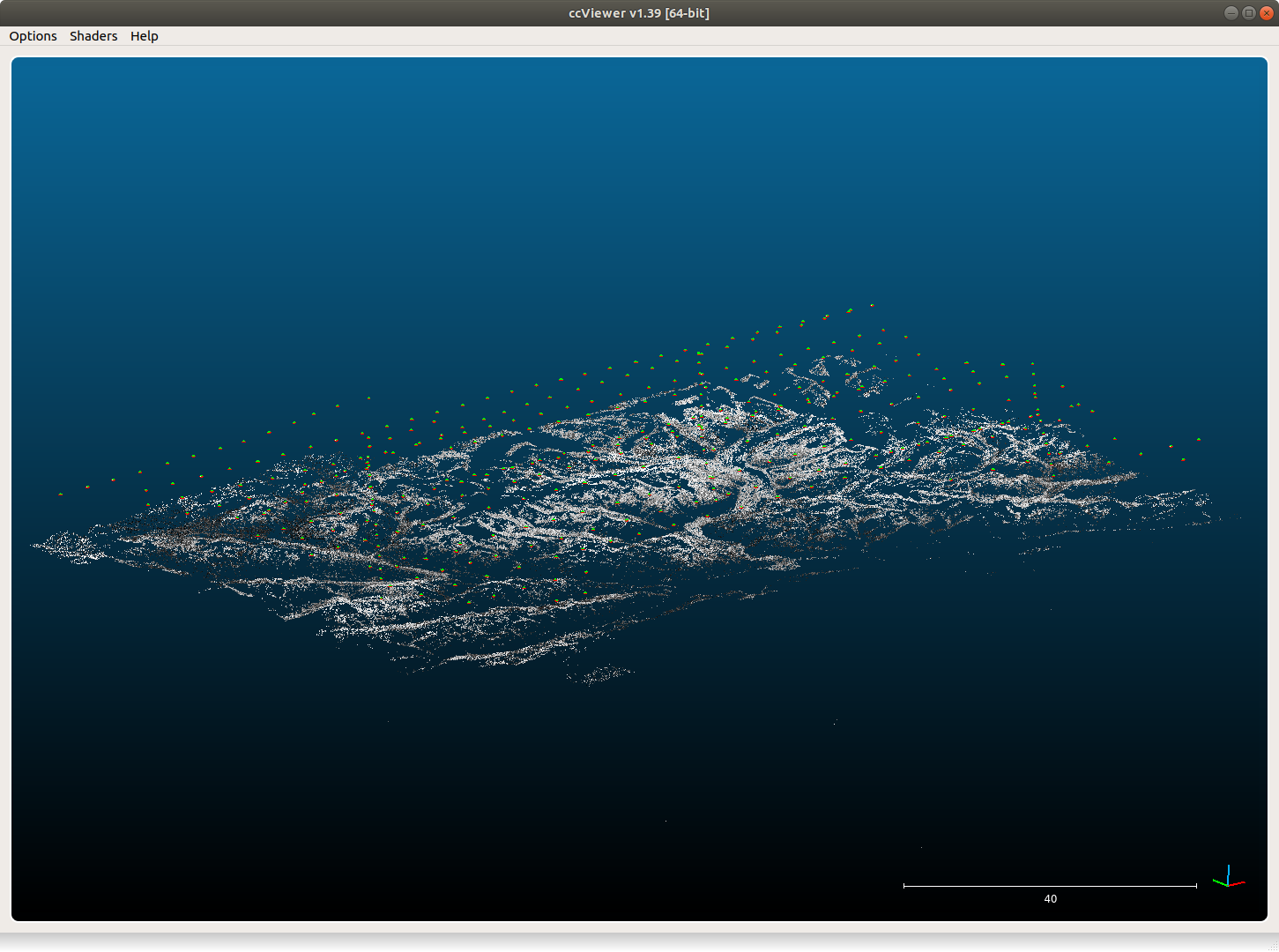automatically finding control points¶
At this point, you should have successfully run mm3d Malt and mm3d Tawny to generate a relative orthophoto
and DEM. You should also have run mosaic_micmac_tiles.py
if needed - otherwise, spymicmac.register.register_ortho() (or register_ortho)
will most likely fail.
In order to run spymicmac.register.register_ortho(), you will need a number of files, detailed in the section
below. After that, this document will describe the process that spymicmac.register.register_ortho()
uses to find GCPs and iteratively refine the orientation.
necessary files¶
reference orthoimage and DEM¶
At the risk of stating the obvious, the reference orthoimage and DEM should cover your study area. The reference
orthoimage can be a high-resolution orthomosaic, or it can be a comparatively low-resolution satellite image.
spymicmac.register.register_ortho() has been tested on both Landsat-8 and Sentinel-2 images, with
satisfactory results for both.
In general, the results will depend in part on the accuracy of the control points - so if your reference orthoimage is highly accurate and of a similar resolution to your air photos, the more accurate the result will be.
Similar rules apply for the reference DEM - the more accurate the DEM, the better the final result.
image footprints¶
This should be a vector dataset (e.g., shapefile, geopackage - anything that can be read by geopandas.read_file).
The footprints do not have to be highly accurate - most of the routines in spymicmac.register() have been
developed using USGS datasets/metadata, which are only approximate footprints. The main use for the footprints
in spymicmac.register.register_ortho() is in the call to spymicmac.register.transform_centers(),
which uses RANSAC
to estimate an affine transformation between the footprint centroids and the relative camera centers estimated
by mm3d Tapas. As long as the distribution of the footprints/centroids is approximately correct, this step
should work according to plan.
Note
Some USGS Aerial Photo Single Frames (as well as the KH-9 Hexagon images) have footprints that are incorrectly placed, or the images have been scanned but not georeferenced. In this case, you may need to create your own footprints. It is most likely worth checking the metadata for these images before you start working.
exclusion and inclusion masks (optional)¶
Finally, in areas with lots of water or terrain that has changed substantially (e.g., glaciers),
spymicmac.register.register_ortho() can use both exclusion and inclusion masks to avoid searching for
matches on unstable terrain. Just like with the footprints, these files should be any data format that can be
read by geopandas.read_file.
The exclusion mask should be polygons of glaciers, landslides, or other terrain that should be excluded from the search. Areas covered by this mask will be excluded from the search.
The inclusion mask should be polygons of land - any terrain that should be included in the search. Areas that are not covered by this mask will be excluded from the search.
relative to absolute transformation¶
The first step in spymicmac.register.register_ortho() to use spymicmac.register.transform_centers()
to transform between the relative and absolute spaces, using the centroids of the footprint polygons and the camera
positions estimated by mm3d Tapas.

Because the footprints are most likely approximate, especially for historic datasets, this step uses RANSAC with a fairly large residual threshold. The goal is to create a rough transformation of the relative orthophoto that can be used for the gridded template matching step.
gridded template matching¶
Once the relative orthophoto has been roughly transformed to absolute space, spymicmac.register.register_ortho()
find matches between the orthophoto and the reference image using spymicmac.image.find_grid_matches(). The
size of each search window is set by dstwin, and the templates (of size 121x121 pixels) are taken from a grid
with spacing determined by the density parameter.
Each template and search image are first run through spymicmac.image.highpass_filter(), to help minimize
radiometric differences between the two images (and maximizing the high-frequency variation). After that, the
template and search image are passed to OpenCV matchTemplate,
and the best match is found using normalized cross-correlation.
The correlation value of each potential match is then compared to the standard deviation of all of the correlation
values from the search image. This value (z_corr) is then used to filter out poor matches later on, as higher
quality matches are more likely to represent larger departures from the background correlation value:

iterative outlier removal¶
After the potential matches are found, a number of filtering steps are used to refine the results. First, any matches
where the DEM does not have a value are removed. Then, an affine transformation between the relative orthoimage
and reference orthoimage locations is estimated using RANSAC, and the number of GCPs is reduced using
spymicmac.register.sliding_window_filter() and the residual to the estimated transformation.
Next, mm3d GCPBascule is called, which transforms the camera locations
to the absolute space. The residuals for each GCP are then calculated, and outliers more than 4 normalized median
absolute deviations (NMAD) from the median residual value are discarded, and mm3d GCPBascule is called again.
This is followed by a call to mm3d Campari using
spymicmac.micmac.run_campari(), and again residuals more than 4 NMAD from the median residual value are discarded.
After this, this process (mm3d GCPBascule -> mm3d Campari -> outlier removal) is run up to 4 more times,
until there are no further outliers found.
final result¶
Once the outliers have been removed, the final GCP locations are stored in a number of files:
auto_gcps/AutoGCPs.xml
auto_gcps/AutoGCPs.txt
auto_gcps/AutoGCPs.shp (+ other files)
AutoMeasures.xml – the GCP locations in each of the individual images
If there are still problematic GCPs, you can manually delete them from AutoMeasures.xml and re-run
mm3d GCPBascule and mm3d Campari.
The next step will be to run mm3d Malt using the Ori-TerrainFirstPass
directory, to produce the absolute orthophoto and DEM.